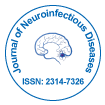Does Intraoperative Use of Vancomycin Powder Increase the Risk of Gram-Negative Infections?
Received: 17-Jan-2018 / Accepted Date: 31-Jan-2018 / Published Date: 03-Feb-2018 DOI: 10.4172/2314-7326.1000274
Abstract
Post-surgical site infections lead to significant morbidity and mortality, as well as significant healthcare costs. Despite intravenous prophylactic antibiotic measures, the rates of surgical site infections, especially those from skin pathogens, have been reported to be up to 15% in individuals undergoing spinal surgery. Thus, the use of vancomycin powder has gained significant popularity in the last few years.
Description
Post-surgical site infections lead to significant morbidity and mortality, as well as significant costs. Despite intravenous prophylactic antibiotic measures, the rates of surgical site infections, especially those from pathogens, have been reported to be up to 15% in individuals undergoing spinal surgery. Thus, the use of vancomycin powder has gained significant popularity in the last few years [1,2]. With the use of topical vancomycin prophylaxis, such infections have decreased to 0.7% to 11.9% [3]..
In one recent study, the overall rate of surgical site infections was decreased from 6.3% to 0.9% in patients who had topical vancomycin used intraoperatively during instrumented spinal surgeries [4].
Not only did the study point to a significantly decreased risk of infection when intraoperative topical vancomycin powder was used, but there was also a shorter duration of infection as well. However, a significant percentage of wound infections in these post-surgical patients was due to the gram-negative organism Pseudomonas aeruginosa .
There are many advantages to using local topical administration of Vancomycin versus parenteral infusion. Parenteral infusion requires about an hour for infusion (prior to incision) to achieve effective systemic levels, which is not required with topical application.
Furthermore, antibiotic distribution is limited systemically secondary to decreased antibiotic bioavailability while with intravenous administration of vancomycin, there is an increased risk of adverse events such as nephrotoxicity, flushing, rash, and hypotension.
Vancomycin is an antibiotic used commonly to treat many grampositive infections, including methicillin-resistant Staphylococcal aureus (MRSA) and Staphylococcal epidermidis. Numerous studies have confirmed the safety of vancomycin powder within the surgical site, which achieves a higher minimal inhibitory concentration in the surgical site, while minimizing the concentration of in the bloodstream.
However, the routine use of prophylactic intraoperative topical vancomycin administration is not without its risks. While decreasing post-surgical site gram-positive infections, it may select for postoperative gram-negative and other poly-microbial surgical site infections [5,6].
Ghobrial et al. [7] demonstrated that in cultures obtained from patients treated with topical vancomycin powder, 60.7% contained gram-negative organisms, compared to 21% in non-vancomycin topical powered controls. In their study, the predominant gramnegative organisms included Escherichia coli , Klebsiella pneumoniae , Proteus mirabilis, and Pseudomonas aeruginosa, as well as polymicrobial infections.
Given the increased risk for gram-negative postoperative infections with the use of topical prophylactic vancomycin, studies have looked at the use of additional antimicrobial coverage. For example, cephalosporins have been typically used to provide gram-negative coverage, but with cephalosporin-resistant pathogens becoming more common in post-operative surgical site infections, expanded gramnegative antimicrobial prophylaxis with gentamicin or aztreonam have shown significant decrease in such infections, as well as an overall decrease in the incidence of surgical site infections [8].
Therefore, adding additional coverage with expanded gram-negative antimicrobials, as an adjunct to topical prophylactic vancomycin may reduce the risk of selected gram-negative pathogens, while still locally treating for common gram-positive pathogens. Finally, there is still a lack of large prospective randomized controlled trials with long-term follow-up looking at the pharmacokinetics and efficacy of intraoperative topical vancomycin powder as well as other drug-related complications.
References
- Beiner JM, Grauer J, Kwon BK, Vaccaro AR (2011) Postoperative wound infections of the spine. Neurosurg Focus15:E14.
Citation: Aliabadi H, Nikpour A, Chehrazi BB (2018) Does Intraoperative Use of Vancomycin Powder Increase the Risk of Gram-Negative Infections? J Neuroinfect Dis 9: 274. DOI:
Copyright: © 2018 Aliabadi H, et al. This is an open-access article distributed under the terms of the Creative Commons Attribution License, which permits unrestricted use, distribution and reproduction in any medium, provided the original author and source are credited.
Share This Article
Recommended Journals
Open 91桃色 Journals
Article Tools
Article Usage
- Total views: 4522
- [From(publication date): 0-2018 - May 07, 2025]
- Breakdown by view type
- HTML page views: 3669
- PDF downloads: 853
